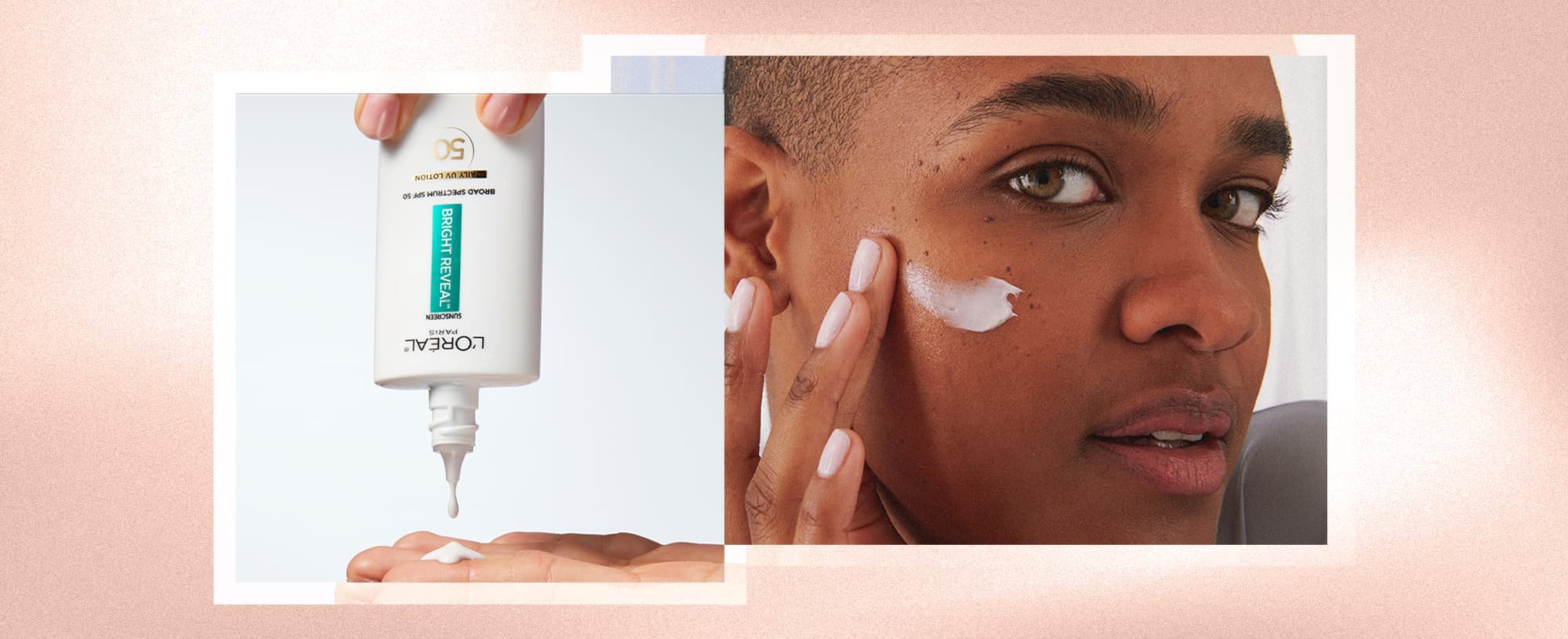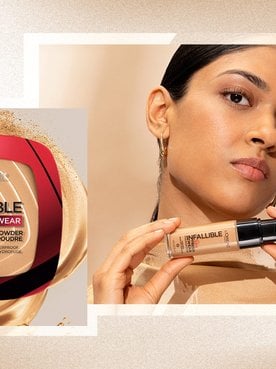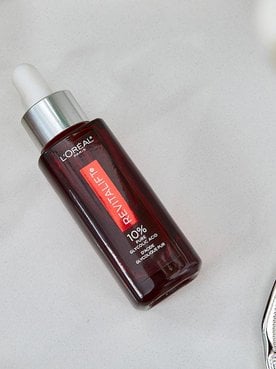The importance of wearing SPF daily is nearly impossible to overstate. Broad-spectrum sunscreen helps protect your skin from the sun’s powerful UV rays, minimizing skin cancer risks while warding off sun-related damage such as wrinkles and sun spots, according to the American Academy of Dermatology (AAD). However, the ashy white cast some sunscreens leave behind might tempt you to skip this step altogether.
Fortunately, not all sunscreens leave behind a white cast. With the right type of sunscreen and a proper application technique, you can protect your skin without the chalky-looking residue (even if you have a deep skin tone). Ahead, we’re spilling the details on why some sunscreen leaves white residue and showcasing some of our best sunscreens with no white cast to add to your sun care routine.
What Is a White Cast?
The term “white cast” refers to the visible white residue left behind after applying physical sunscreen (also known as mineral sunscreen). It can sometimes have a purple or blueish tint and can range from subtle to very noticeable. This white cast can also create a “makeup flashback” in photos, causing you to look paler than you are sans flash photography.
While a sunscreen white cast can show up on any complexion, it’s a particularly common concern for those with darker skin tones. Fear not, though: this isn’t something that happens with every SPF. There are plenty of no-white-cast sunscreens on the market that help protect your skin without the ghostly glow.
What Causes White Cast in Sunscreen?
If your sunscreen leaves a white cast, it’s likely that ingredients like zinc oxide or titanium dioxide are to blame. These minerals create a physical barrier that helps protect your skin from damaging ultraviolet rays. Unfortunately, both zinc oxide and titanium dioxide are white in color—and since they sit on top of your skin, they can leave your skin looking ashy or chalky. Keep in mind that not all mineral sunscreens leave behind a white cast: it ultimately depends on the concentration and formulation of the mineral filters in the sunscreen.
How To Protect Your Skin Without a White Cast
According to the AAD, chemical sunscreens don’t contain the chalky minerals that lend physical sunscreens a chalky white tint. Instead, they contain chemical filters that absorb UV rays and convert them into heat. As such, they tend to be easier to rub into the skin and far less likely to leave your skin with an ashy cast, making them among the best sunscreens for dark skin tones.
While there are plenty of chemical sunscreens on the market, we recommend opting for one that boasts skincare benefits, too. Try L’Oréal Paris Bright Reveal Broad Spectrum SPF 50 Daily UV Lotion. The broad-spectrum SPF 50 formula with vitamin C and E helps protect against environmental damage caused by free radicals that can accelerate the visible signs of aging. It instantly leaves the skin feeling fresh and moisturized, while continued use over time helps promote a brighter, smoother, more even appearance. Plus, it’s non-comedogenic and suitable for all skin types (including sensitive skin). You can wear the invisible-finish formula alone or layer it under foundation in place of your usual makeup primer.
Shop the Product
7 Tips For Avoiding a White Cast
In addition to choosing the right sunscreen, there are a few sunscreen application tricks that can help you avoid that unwanted chalky tint. We’re sharing them all right here.
1. Give your sunscreen time to absorb
One major mistake people make when applying sunscreen is not giving the formula enough time to sit on their skin before heading outdoors. The AAD recommends applying sunscreen at least 15 minutes before you go outside to allow the product time to work. This 15-minute window also gives it adequate time to absorb, so you’re less likely to be left with a white cast.
Editor tip: The United States Food and Drug Administration (FDA) recommends reaching for a broad-spectrum sunscreen with an SPF of at least 15 for daily use, but you can certainly go higher.
2. Reach for a tinted formula
Tinted formulas are among the best sunscreens for darker skin tones, as they contain pigments that help offset any white cast. As with any sunscreen product, you’ll want to reach for one with an SPF of at least 15 to protect your skin from the sun’s rays.
Editor tip: Double up on your sun protection by layering an SPF moisturizer like L’Oréal Paris Wrinkle Expert 55+ Age Defense Lotion SPF beneath your tinted moisturizer. The hydrating formula provides broad-spectrum SPF 30 protection against UV rays and helps visibly smooth wrinkles for younger-looking skin. The L’Oréal Paris Revitalift Triple Power Day Lotion SPF 30 is another great option. In addition to SPF, it contains vitamin C, pro-retinol, and hyaluronic acid and helps visibly reduce wrinkles and firm skin.
Shop the Products
3. Use the right amount of sunscreen
Oftentimes, where sunscreen is concerned, we assume more is better. That’s not necessarily the case, though: if you apply too much product, you may be left with a chalky film on your skin. The rule of thumb, according to the AAD, is to use a shot glass (one ounce) worth of sunscreen to fully cover your body.
Editor tip: Note that applying your sunscreen once in the morning isn’t sufficient for all-day protection. The FDA recommends reapplying your SPF every two hours, or after sweating, swimming, or toweling off.
4. Rub in your sunscreen thoroughly
Oftentimes, a sunscreen white cast isn’t due to the sunscreen itself, but how it’s applied: per the AAD, sunscreen should be rubbed in thoroughly. Make sure to cover all exposed skin and work the SPF into your skin to blend away any white streaks or globs of product.
Editor tip: Keep in mind that you’ll need to take other sun protection measures as well. These include seeking out shade and wearing protective accessories, like sunglasses, long-sleeved shirts, and hats.
5. Try a foundation formulated with SPF
Foundations with SPF may not be enough for all-day coverage, but they’re a great option if you’re looking to boost your sun protection. We suggest reaching for a liquid formula like the L’Oréal Paris Age Perfect Radiant Serum Foundation with SPF 50. This radiant-finish foundation provides natural-looking coverage and offers SPF 50 protection against UV rays. It’s available in 30 shades that help even the skin tone without settling into fine lines.
Editor tip: If you need to touch up your sunscreen midday but don’t want to reapply your makeup, try reaching for a face powder with SPF.
Shop the Product
6. Give gel sunscreen formulas a go
Many gel sunscreens have clear formulas, which makes the possibility of a white cast close to zero. However, the lack of a visible tint may leave you more vulnerable to missing certain spots. If you’re using a gel sunscreen, make sure to apply it carefully so you don’t leave any areas uncovered.
Editor tip: Sunscreen spray is another type of sunscreen to try if you want to avoid a white cast. These tend to be easy to apply and absorb quickly, making them ideal for on-the-go applications. Be generous when you spray to ensure your skin is adequately protected.
7. Consider using sunscreen oil
If cream, gel, or spray sunscreens aren’t your cup of tea, try a sunscreen oil. These luxurious-feeling formulas glide on smoothly and evenly, making them a great pick for those who have difficulty blending traditional sunscreens onto their skin without a white cast.
Oil-based SPFs are also considered excellent sunscreens for dark skin tones, though they work great for any skin tone. As a bonus, they leave behind a glowy sheen that’s very flattering whether you’re poolside sipping mimosas or dipping your toes in the sand at the beach.
Editor tip: Before you apply sunscreen, make sure your skin is clean and dry to allow the SPF to penetrate deep and do its job. According to the Mayo Clinic, sunscreen should be the last step in your routine.
Next Up: Should You Put Sunscreen on Before or After Moisturizer?
Photo Courtesy of L'Oréal Paris







